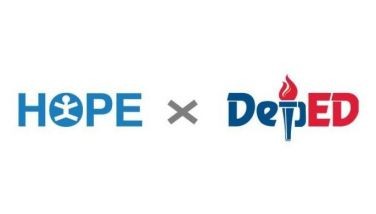Cruisin’ Down The Pasig
April 15, 2007 | 12:00am
 My 78-year-old father’s stories of the Pasig river are fairytales to me. I cannot imagine swimming in the river or eating clams caught there. By the time I, a Martial Law baby, knew the Pasig River, it looked and smelled of death and decay. My Papaw’s stories, however, stirred a longing in me to see the nilad, the flowering aquatic plant that gave Manila its name, and to see the river as my father saw itâ€â€Âfragrant, pleasant and teeming with life.
My 78-year-old father’s stories of the Pasig river are fairytales to me. I cannot imagine swimming in the river or eating clams caught there. By the time I, a Martial Law baby, knew the Pasig River, it looked and smelled of death and decay. My Papaw’s stories, however, stirred a longing in me to see the nilad, the flowering aquatic plant that gave Manila its name, and to see the river as my father saw itâ€â€Âfragrant, pleasant and teeming with life.
Over the years efforts have cleaned the Pasig River up somewhat and the stink isn’t as overwhelming now as it was 10 years ago, when one could not drive along its banks with the windows open. And now there’s even a ferry service plying the riverâ€â€Âthat’s certainly something worth checking out.
The Pasig is still dirty, with a flotilla of plastic bags clogging the San Juan tributary and several other stretches of the Pasig in other cities and municipalities, but the ferry ride was an eye-opener.
A joint project of the Department of the Environment and Natural Resources (DENR), the Department of Transportation and Communications (DOTC), the Pasig River Rehabilitation Commission (PRRC) and a Filipino-Australian consortium that operates the boats, the Pasig River Ferry has four locally-built, 150-seater, twin-hulled boats that ply the river and stop at four stations: the Guadalupe station, Hulo station in Mandaluyong City, the Sta. Ana and the Escolta stations, both in Manila. The fee is a flat P25â€â€Âgreat if you’re going the distance from Guadalupe to Escolta, but steep if the ride is just from one station to the next.
The boats are air-conditioned, with a widescreen TV mounted behind the pilot’s cabin that can be used for videoke during the evening trips. They also have wet bars and areas on the port and starboard sides where tables flanked by seats facing each other are ideal for onboard picnics.
As the trip progressed, we passed the San Juan tributary, which was choked with a rainbow of plastic bags. It had rained the previous day and garbage that had been dumped in other esteros that emptied out to this tributary had floated down.
"Ew!" was the common reaction of disgust of those on board. Several mothers pointed to the refuse and took the opportunity to drum some environmental sense into their children. "That is why you should never litter, because your garbage comes back to haunt you," one mother was overheard telling her children.
Efforts to clean up the roads and walkways on both banks of the river were visible from the ferry, especially in Makati, Mandaluyong and some parts of Manila. In these lovely spots, colorful homes and small river crossings were festive and some had little flower-bedecked azoteas (balconies) overlooking the river.
Other parts of the river, particularly just past Hulo and along the Pandacan and Sta. Ana districts, were sadly derelict and would have made good settings for films noir or horror movies.
Eventually, the PRRC hopes to have ferry stations that will enable travel from Pasig City all the way to Arroceros in Manila, where the estuary known as the Pasig River meets the waters of Manila Bay.
Meanwhile, the four operational stations and one that is soon to open in Lambingan, Mandaluyong City, will serve as the common Filipino’s most affordable river cruise.
As the ferry reached the Sta. Ana station, a rifle-bearing member of the Presidential Security Group (PSG) came aboard. Then we knew we would get a special treatâ€â€Âwe would see Malacañang Palace from the river.
Old photographs of Malacañang often took advantage of the river view, as the palace gleamed like a gem amid the foliage of its gardens and was reflected on the river’s smooth surface.
That is not so now. The presidental boat house, where the presidential yacht is moored, has fallen into sad disrepair and the beautiful reflection of the presidential residence and guesthouse is marred by floating refuseâ€â€Âon this day it was several discarded sardine cans, plastic bags that had let loose their cargo of trash and styrofoam instant noodle bowls.
When we disembarked at the Escolta station across the bank from the National Press Club, however, the promenade that greeted us was a delight. Paved in blue stone and earthen tile, the station beckoned to people. By night it is well-lit, as we found out after a three-hour foray into Chinatown before making our return trip.
The trip back to Guadalupe was more bearable because the effluvia was not as visible in the dark and the families riding the ferry seemed livelier and ready to party, as they took turns belting out videoke songs.
"This ferry is good for leisurely trips up and down the river," my friend observed. "This is not for people in a hurry." We timed the docking, loading and unloading at about five minutes at each station; the trip between Escolta and Guadalupe took about an hour, a distance that can be covered in less time by land.
Is this the Pasig River of my father’s memory? Certainly not. "When I was a small boy, we used to swim in the San Juan tributary and in the Hulo segment of the river, when we still lived in Hulo," he says, the lines on his face softening slightly. "The water was sweet and smelled sweet. On hot summer days, we would go fishing for banak and other fish that thrived in the brackish water."
During the war years, the Pasig River was what sustained the people who lived by its banks. "The Pasig was teeming with tulya (clams) and fish. When food in the markets was scarce, we could get food from the riverâ€â€Âit was a living river and a beautiful river in my time. Back then, it was a social coup to own a house overlooking the Pasig, that is why Malacañang is located on its banks."
It was also an avenue of transport and commerce in the days before the automobile."The river ferry then was good for transporting people and cargo from Manila Bay all the way into Laguna de Bai and the Marikina river. It was what kept commerce going, even after (World War II), when transport was not as easy as it is now."
In his book "Manila, My Manila," the late National Artist Nick Joaquin credits the creation of Metro Manila as we know it to the Pasig River, which "rises from the north side of Laguna de Bai and flows westward into Manila Bay. The mouth of the river was at first somewhere near Pasig (City)."
"Into the bay there the river carried its load of mud and sand," Joaquin says in the first chapter of his book. "After hundreds of years these deposits of soil had piled up to form ground. Through this triangle of ground that it had formed, the river forced a new channel, with many loops, to reach the bay now farther off."
This was how Manila’s townships evolved, from the movement of earth caused by the Pasig River, which now measures 27 kilometers from its mouth in Arroceros to Laguna de Bai.
In his novel "El Filibusterismo," national hero José Rizal describes how a captain navigates his old steamer Tabo along the Pasig to Laguna de Bai.
As Rizal put it, the Pasig "glitters in the morning sunlight," with carpets of water lilies and nilad slowly drifting down its length. In Rizal’s time, too, the Pasig was rich with fish and fish traps were laid out in many places, while mangroves and bamboo lined its banks. Folk loved to bathe in the river, but they had to beware the odd crocodile that may have wandered in from Laguna de Bai.
Back then, the Pasig River’s water quality was sacrosanctâ€â€Âwhen a cholera epidemic broke out in 1820, foreigners were accused of poisoning the river and angry natives reportedly massacred some of the accused.
In the 1970s, the Pasig River was classified as a class-D body of water; effectively, it was declared dead, for class-D means a body of water no longer sustains life.
Imelda Sarmiento, executive director of the Clean and Green Foundation, says the government is still working on a masterplan that had been laid out soon after the 1986 Edsa People Power revolution.
The ferry service is part of that effort, Sarmiento says, to provide funding for the river’s rehabilitation and to make people aware of the sorry state of this once beautiful river.
She says it will take P15 billion and 15 years to rehabilitate the Pasig and bring it up one notch to a class-C rating: "Class-C means the river is alive again and hosting life. That is a long way from getting the river clean enough to swim in; for that you need a class-B body of water. If we get the Pasig River up to class-C status, we can allow watersports with minimal contact with the water, such as dragon-boat racing."
Raising the river’s classification just one notch, she says, "is a humble objective for a Herculean task."
While many of the ferry passengers pointed to shantytowns on the riverbank and accused them of polluting the river, Sarmiento has information to the contrary.
A Danish government study of the Pasig’s pollution levels in 1992 showed that only 10 percent of the river’s pollution was caused by solid wasteâ€â€Âthe garbage we regularly see floating on the river. The rest of the pollution is unseen, but definitely there in the stench: 45 percent of the pollution was from industrial liquid waste and 45 percent from municipal liquid waste excreted by households in cities and municipalities that line the river’s banks.
The study was repeated in 1998, and the data showed that the solid waste pollution level fell to five percent and the industrial liquid waste level dropped to 30 percent. However, the level of municipal waste soared to 65 percent.
The Pasig River basin is also the exit point, so to speak, of the waters of Laguna de Bai, which in turn catches the effluvia from at least 20 other Luzon rivers. In essence, the Pasig’s pollution is not just from Metro Manila, but from other parts of Luzon as well.
Sarmiento also notes that the rise in the level of municipal liquid waste indicated that the Metropolitan Waterworks and Sewage System (MWSS) "did not do a good job of disposing of our sewage."
She added that the new concessionaire that took over the MWSS’ east and west zones, Manila Water and Maynilad Water, have had this onerous task passed on to them: "Manila Water has (been treating sewage and waste-water) for the last three years," Sarmiento shares. "Maynilad has been unable to do this due to the problems that plague it."
She says homeowners can help ease pollution levels in the Pasig by having their septic tanks cleaned "at least twice a yearâ€â€Âsomething few of us even know well enough to do"â€â€Âand by reducing the amount of waste water they produce because "even if the water you are running from your tap is clean, it becomes waste water when it gets to the sewers."
In short, it is the "burgeoning population" along the banks of the Pasig and some of Luzon’s other waterways that spelled the death of the Pasig. It is literally the filth from our bodies that poisoned the river.
The Clean and Green Foundation, begun in 1994, has raised P50 million through its Piso Para sa Pasig fundraiser for a massive education campaign to get people to help rehabilitate the Pasig. That P50 million is just for the education campaign, Sarmiento clarifies. "It will take billions more to bring the river back to life, but we need to create awareness before we can really do the work because if people do not learn how to care for their rivers, then rehabilitation will be for nothing."
She notes that it took 10 years to revive the Singapore river, which is only three kilometer long. "Give us a chance with the Pasig, which is 27 kms. While it is true that great cities rise from great rivers, civilization has killed its share of riversâ€â€Âsuch as the Thames in London and the Seine in Parisâ€â€Âbut the damage can be reversed if we help the river heal itself."
In this context, the P25 ferry ticket is no longer unreasonable and the view from the ferry’s deck is not merely unpleasant. It is a view of what must be done by all of us to bring back the beauty of our river, the river of our dreams and of our elders’ memories.
BrandSpace Articles
<
>
- Latest
- Trending
Trending
Latest















